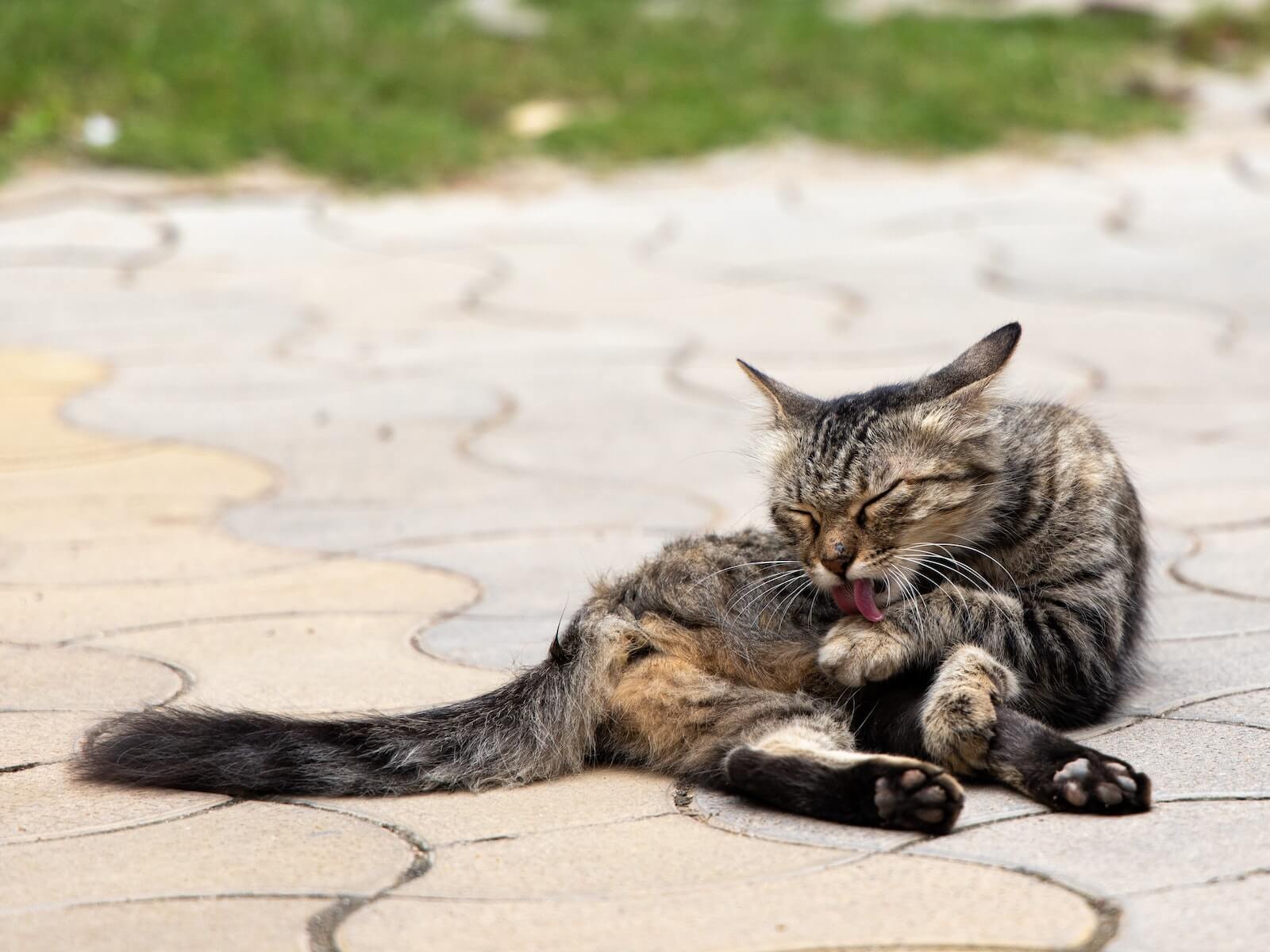Understanding Your Cat’s Tail Talk
We often associate a wagging tail with a happy dog, but cats have their own unique ways of communicating with their tails. Ever noticed your cat’s tail twitching while they’re seemingly asleep? Don’t be fooled! A wagging tail while napping isn’t always a sign of a happy kitty.
Cats use their tails to communicate a whole lot more than dogs do. It’s their way of telling us – and each other – what’s on their mind. Deciphering those tail twitches, especially when they’re lying down, can be like trying to crack a secret code. Let’s explore some common tail-wagging scenarios and decode their hidden meanings.
The Relaxed Wag
Picture your cat basking in a sun puddle, eyes half-closed, with their tail moving in a slow, gentle sweep. This is the feline equivalent of a contented sigh. It’s their way of saying, “Life is good, I’m relaxed, and all is right with my world.”
The “Back Off” Wag
Imagine trying to engage your cat in playtime, but they remain settled, their tail swishing back and forth with increasing energy, maybe even thumping against the floor. This is your cue to give them space. This tail language suggests they’re feeling agitated or irritated.
The Warning Wag
If your cat’s tail is whipping back and forth rapidly, with flattened ears and dilated pupils, take it as a serious warning sign. This indicates extreme stress or fear. In these situations, it’s crucial to give them a wide berth and allow them to calm down.
The Playful Wag
Have you ever noticed your cat lying on their stomach, their back end wiggling and their tail twitching with anticipation? This often precedes playtime, especially if they’re focused on a toy. That tail-wagging is all about building excitement and preparing to pounce!
Tail Wagging: More Than Meets the Eye
Subtle Signals
So, you’re relaxing with your cat, and you notice their tail doing a little flick. It’s almost as if something caught their eye, but they’re too comfortable to investigate. More often than not, these subtle tail movements while lying down are a good sign! It’s like a soft purr expressed through their tail—a sign of pure contentment.
If the tail starts moving a little faster, with a bit more energy, it could mean something exciting is about to happen, like dinner time or the appearance of a favorite toy.
On the other hand, a short, sharp tail flick, almost like a quick snap, could be a subtle warning. They might be feeling irritated. Basically, they’re saying “give me some space.”
Could it Be Something More?
While most tail flicks are nothing to worry about, pay attention to your cat’s overall body language. If their tail is flicking and they are acting out of character – hiding more than usual, not eating as much, or being extra grumpy – it’s worth calling your vet. There’s a chance they could be feeling unwell or experiencing discomfort.
The Mysteries of the Feline Mind
Even with all the research, there’s still a lot we don’t know for sure about how cats communicate. Some experts believe tail flicking could also be connected to a cat’s incredible sense of balance or even just a random twitch while they’re dreaming.
The bottom line is, if in doubt, it’s always best to err on the side of caution and consult with your veterinarian.
Reading Between the Wags: Happy or Not?
Even when lounging, a cat’s tail can tell you what’s on their mind. A slow, relaxed tail wag often indicates contentment, like a happy sigh. This is different from the excited thumps they do when anticipating a treat! Some cats even greet their humans with a little tail wag.
However, a fast and furious wagging tail, especially with flattened ears or a hiss, could indicate irritation or aggression. It’s their way of saying, “Back off!”
And then there’s the tail flick, which can mean they have an itch, their muscles are twitching, or they might even be dreaming about chasing laser pointers!
A Tail Language Cheat Sheet
Here’s a table to help you decipher your cat’s tail language:
| Tail Movement | Possible Meaning |
|---|---|
| Slow, gentle wag | Relaxed, content, greeting |
| Fast, thrashing wag | Irritated, aggressive |
| Swishing back and forth | Anxious, stressed |
| Flicking | Itch, muscle twitch, dreaming |
So, are cats always happy when they wag their tails? Not necessarily. You have to consider all the clues – their body language, the situation, and maybe even the tone of their last meow – to really understand what they’re trying to tell you.
Current research is always digging deeper into the mysteries of cat behavior, so what we know about their communication is constantly evolving.
The Downward Wag: A Different Kind of Signal
Cats are masters of subtle communication, and their tails are no exception. A downward tail wag tells a different story than a typical wag. It suggests your feline friend is experiencing an emotion other than pure joy.
A cat leisurely swishing its tail low while lounging is probably relaxed and content. However, a tail whipping back and forth forcefully, almost vibrating, could mean they’re feeling agitated or even becoming aggressive.
Observe their entire body for more clues. Are their ears flattened? Are their pupils dilated? These, along with a low, rapid tail wag, could signal fear. On the other hand, if the tail is twitching or flicking playfully while they’re engaged with a toy, it likely indicates excitement.
Every cat is unique. What might be a sign of irritation in one cat could mean something entirely different for another. Pay close attention to your cat’s individual quirks and habits. Over time, you’ll become fluent in their unique tail-talking language.
Key Points to Remember
- Cats use their tails to communicate a wide range of emotions and intentions.
- A slow, gentle tail wag when lying down indicates contentment.
- A rapid, forceful tail wag, combined with flattened ears and dilated pupils, signals extreme stress or fear.
- A tail twitching on a cat lying on its stomach can indicate anticipation before playtime.
- The meaning of tail wags depends on context, such as the cat’s overall body language and environment.
- Every cat has its own unique tail-wagging patterns.
- Consult a veterinarian if you notice sudden changes in a cat’s tail wags, especially if accompanied by other behavioral shifts.
Interested in learning more about animal behavior? Check out these articles:
- Are you concerned about why golden retrievers have a shorter lifespan? Why are golden retrievers dying younger?
- Have you wondered why bearded dragons frequently bob their heads? Why do bearded dragons bob their heads?
















